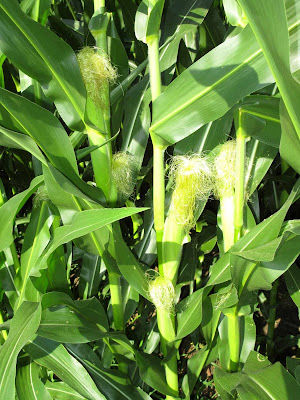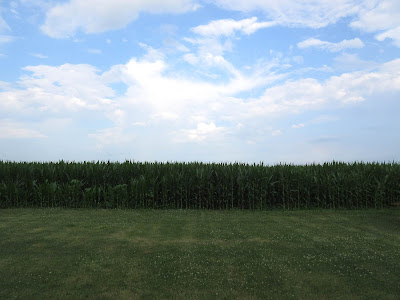Cars today are so powerful that we rarely notice winds as we hurtle along at highway speeds, but believe it or not, your vehicle uses more fuel driving into the wind versus driving through calm air. Need proof? I believe the data below can prove it.
A Little Overview
Previously, I shared my evidence that
air temperature affects fuel economy, and my evidence for wind speed comes from the same source. I've recorded the miles per gallon (MPG) I achieve on my commute to work each morning, and combined that data with wind speed measurements recorded by weather services reporting on the internet. Bear with me as I try to show the correlation I think is evident in the data.
The Simplified Analysis
This first chart compares the wind speed reported by a weather station in my area with the MPG recorded by my car. As you can see there's no real correlation between fuel economy and wind speed. What's missing is the direction of the wind relative to the car.
Intuitively, we expect a headwind to lower fuel economy while a tailwind should increase it. Without a directional component to the data, it appears to be random, and one might conclude that fuel economy is independent of wind speed.
Fortunately, the wind speed data sources used for this analysis include the direction of the wind. Given the wind speed and direction, the resultant direction of my commute based on the start and end points, and the average speed of the vehicle, we can calculate what I call the "Average Relative Headwind Speed." In simple terms it's the average speed of the air striking the car as it traveled over the entire commute, and combines the effect of the wind speed with the speed of the car.
This plot shows a stronger trend than the first plot, indicating that as relative headwind speeds decrease, fuel economy increases. You might also notice that it's difficult to represent the trend with one simple curve (shown here as a solid red curve). I believe that's because fuel economy is dependent on other factors besides wind speed, or temperature for that matter. In a future post, I'll try to combine all these factors in a way that better represents the connection between multiple weather conditions and fuel economy.
More Details on Assumptions, Methods, and Data
As I mentioned earlier, this data was gathered while commuting to work each morning in my 2013 Volkswagen Passat TDI SE which has a diesel engine and manual transmission. The MPG readings were provided by a dashboard monitor that computes average MPG over the course of a trip. I don't know how VW programs that calculation, but presumably it's a function of distance traveled and fuel flow to the engine.
The data presented here was gathered between February 9 and July 2, 2015 so that the date range matches my previous post,
Does Outside Air Temperature Affect MPG? In that post, I noted that the route was consistent each morning until April 2, when road construction added a detour that included a longer 45 mph zone each day until the end of the data period. I've continued gathering data since then, so more data is available and will likely be shared in the future. As traffic and road conditions allowed, I attempted to maintain the same speed on each section of road each day, and tried to make my accelerations and braking consistent between commutes. Because I commute before 6 AM, traffic rarely interfered with my ability to maintain a consistent pace.
The direction of my route is simply based on a straight line drawn between the start and end points of my commute. The angle of that line relative to true north was calculated, and compared to the average wind direction during the commute to determine the angle of incidence with which the wind struck the car. Wind speed and direction were gathered from weather stations reported on wunderground.com, and chosen for their proximity to my route and ability to reflect the conditions my car experiences. Unfortunately, winds can change speed and direction over the course of a 40-minute drive, so without more sophisticated ways of recording and calculating based on those changes, my results will suffer some amount of error due to this variation in the wind. I'm sure that shows up as some of the scatter in the data, but I don't currently know how to estimate that effect.
The Average Relative Headwind Speed (ARHS) was calculated by representing the car's average speed and direction as one vector, and the wind's speed and direction as another vector. The vector resulting from adding the two is the ARHS. When both vectors are pointing the same direction, the magnitude of the resulting vector is simply the sum of the two. When my car is driving directly into the wind, the magnitude of the ARHS is the difference of the two. Any angular difference in the direction of my car and the wind requires some trigonometry to achieve the ARHS.
The polynomial trendline shown on the second chart above was calculated by Microsoft Excel, and I chose a second-order polynomial because I know the force of the wind on an object is directly related to the square of the speed of the wind. I think fuel economy is probably linearly related to that force, so approximating the relationship between fuel economy and relative wind speed as a second-order polynomial made sense to me. I've wondered about the effect of the outliers on this approximation, but I'll leave that analysis for another day.
Conclusion
The effect of wind speed on fuel economy is evident in the data. The scatter in the data is greater than I'd desire, but likely exists because (a) my analysis ignored a variable(s) that also has a strong effect on fuel economy, and/or (b) my assumptions and measurement methods are too general. I am pleasantly surprised that the data shows the basic shape of a second-order polynomial, even if the coefficient of determination is rather low.
The next time we visit the MPG topic, we'll look at the effect of water on the road, and possibly some conclusions based on multiple variables.
Related post:
Does Outside Air Temperature Affect MPG?

















































